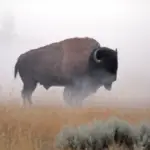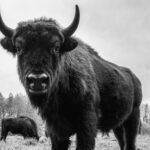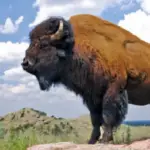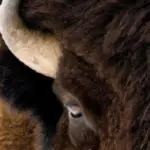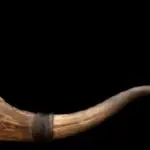Are you curious about the mysterious mating habits of bison? Look no further! “When Do Bison Mate” is here to satisfy your thirst for knowledge about these majestic creatures. Delve into the secret world of bison reproduction and uncover the fascinating details of their mating rituals. From the timing of their courtship to the intricacies of their mating behaviors, this product will provide you with all the information you need to become an expert on bison mating. Feed your curiosity and embark on a journey into the captivating world of bison romance with “When Do Bison Mate”.
Understanding Bison Mating Behavior
Basic Information about Bison
Bison, also known as American buffalo, are large, herbivorous mammals native to North America. They are characterized by their massive size, with adult males weighing up to 2,000 pounds and standing over six feet tall at the shoulder. Bison have a thick, shaggy coat of fur, a hump on their shoulders, and curved horns. They live in herds, which can consist of several dozen to a few thousand individuals. Bison are primarily grazers, feeding on grasses and other vegetation.
Bison Social Structures and Hierarchies
Within a bison herd, there is a social structure or hierarchy that helps maintain order and ensure the survival of the group. This hierarchy is based on dominance and is established through displays of aggression and submission. Adult males, known as bulls, typically occupy the highest positions in the hierarchy, followed by females or cows, and their offspring. Bulls engage in competitive behaviors, such as sparring and charging, to establish their dominance and secure mating opportunities. Cows often form small groups within the larger herd, consisting of related females and their calves.
Bison Courtship Rituals and Signals
Bison courtship rituals play a crucial role in the mating process and are characterized by specific behaviors and signals. During the mating season, bulls engage in impressive displays of dominance to attract and court females. These displays often involve vocalizations, such as low grunts and bellows, as well as physical demonstrations of strength, such as rubbing their heads on the ground or thrashing their horns against trees or bushes. Bulls also engage in a behavior known as wallowing, where they roll in mud or dust baths, leaving their scent behind to mark their territory and attract potential mates.
Bison Mating Season
Timing of the Bison Mating Season
Bison have a well-defined mating season, which typically occurs during the summer months, starting from July and lasting through early September. The timing of the mating season is influenced by various environmental factors, including changes in day length, temperature, and availability of food resources. During this period, the hormone levels in both males and females change, triggering an increase in mating-related behaviors.
Environmental Factors Influencing Mating Season
Several environmental factors influence the timing of the bison mating season. One important factor is the availability of nutrient-rich forage, which is essential for the successful reproduction of females and the growth and development of offspring. As the summer progresses and grasses reach their peak nutritional value, the mating season begins. Additionally, temperature and daylight duration play vital roles in regulating bison reproductive cycles, with longer daylight hours and warmer temperatures signaling the onset of the mating season.
Changes in Bison Behavior During Mating Season
The mating season brings about significant changes in bison behavior. Bulls become more active and aggressive as they compete for mating opportunities. They engage in frequent displays of dominance, vocalizations, and physical sparring with other males. Cows, on the other hand, may become more receptive to the advances of the dominant males during this period. The overall dynamics of the herd can shift as bulls assert their dominance and females choose their mates.
Selecting Mates: Criteria and Competition
Why Bison Choose Certain Mates
Bison, like many animals, have specific criteria when selecting mates. Females often choose mates that exhibit signs of strength, dominance, and good genetic fitness. The dominant bulls, with their impressive displays and physical prowess, are often the preferred choice for mating. This preference for dominant males ensures that the offspring inherit strong genetic traits, increasing their chances of survival and reproductive success.
Role of Males in Competition for Mates
Male bison play a crucial role in the competition for mates. They engage in intense physical contests with other males to establish dominance and secure mating rights. Bulls often engage in head-to-head battles, using their powerful neck and shoulder muscles to try and push their opponents off balance. The strongest and most dominant males are more likely to be successful in mating and passing on their genes to the next generation.
Influence of Female Bison in Mate Selection
While male bison compete for mates, it is ultimately the female bison that have the final say in mate selection. They assess the displays of dominance and physical prowess exhibited by the males and choose the most suitable mate. Female bison are attracted to confident, healthy, and genetically superior males, as these traits increase the chances of their offspring surviving and thriving in the harsh environment.
Bison Copulation Process
Bison Courtship Behavior
Bison courtship behavior is characterized by a combination of vocalizations, displays of dominance, and physical interactions between males and females. As a female enters her fertile period, she may respond positively to the displays of a dominant male, which can include head down displays, nudging, and licking. Bulls also engage in behaviors such as displaying their horns and thrashing their heads, demonstrating their strength and vigor to attract females.
Copulation Mechanics and Duration
Bison copulation occurs when the male mounts the female from behind. The male’s penis is thrust into the female’s vagina, and copulation typically lasts for several seconds to a minute. This brief and intense mating process is crucial for successful fertilization. Multiple copulations may occur during the mating season, increasing the chances of successful impregnation.
Post-Copulation Behavior
After copulation, both males and females may engage in various behaviors. Males may continue to assert their dominance through displays and vocalizations, while females may move away from the male to avoid further mating attempts. The hierarchical dynamics within the herd may reestablish themselves, with dominant bulls maintaining their positions and less dominant males avoiding confrontations with them.
Pregnancy and Gestation in Bison
Length of Bison Pregnancy
The gestation period for a bison is approximately nine months, similar to that of humans. If a female successfully mates during the breeding season, she will carry the developing fetus for this duration before giving birth. Pregnancy typically occurs during the winter months, with calves being born in the spring or early summer.
Pregnancy Detection and Signs
Detecting pregnancy in bison can be challenging, as external signs may not be easily visible. However, experienced observers can sometimes detect changes in a female’s body shape and behavior. The most reliable method of pregnancy detection is through ultrasound examination. Veterinarians can perform ultrasound scans to visualize the developing fetus and confirm pregnancy.
Behavior and Habitation Changes During Pregnancy
During pregnancy, female bison may exhibit changes in behavior and habitation. Pregnant females often isolate themselves from the rest of the herd and seek out secluded areas to give birth and care for their calves. They may exhibit heightened vigilance, ensuring the safety of themselves and their unborn offspring. Pregnant bison may also modify their feeding habits and focus on consuming nutrient-rich vegetation to support the growth and development of the fetus.
Calf Birth and Bison Offspring Care
Timing and Process of Bison Birth
Bison calves are typically born in the spring or early summer, coinciding with the availability of abundant forage and favorable weather conditions. The birthing process usually takes place in seclusion, with the mother finding a quiet and safe area away from the rest of the herd. The birth itself is relatively quick, lasting only about 15 to 30 minutes. Once born, the calf quickly stands and attempts to nurse from its mother.
Mother and Herd Care of Newborn Calves
After the birthing process, the mother immediately begins caring for her newborn calf. She cleans the calf by licking it, removing any birth fluids and stimulating blood circulation. The mother also encourages the calf to stand and nurse, providing it with essential colostrum and milk. The entire herd, particularly females with their own calves, may exhibit protective behaviors towards the newborn, ensuring its safety and well-being.
Survival Rates of Bison Calves
The survival rates of bison calves are influenced by various factors, including the availability of food resources, predator pressure, and environmental conditions. Bison calves are relatively resilient and can quickly adapt to their surroundings. However, mortality rates can be high, particularly in harsh or unpredictable environments. Approximately 50% of bison calves do not survive their first year, but those that do have a higher chance of reaching maturity and contributing to the population’s growth.
Influence of Human Activity on Bison Mating
Impact of Hunting on Bison Population and Mating
Human hunting has had a significant impact on bison populations and mating behavior throughout history. In the late 1800s, unrestricted hunting and the market demand for bison products nearly drove them to extinction. This indiscriminate hunting disrupted natural mating patterns, as it often targeted the largest and most dominant males that were vital for successful reproduction. Through conservation efforts and the establishment of protected areas, bison populations have recovered, allowing for a more natural mating pattern to resume.
Effect of Bison Farming and Domestication on Mating
The domestication and farming of bison have also influenced their mating behavior. In captive breeding programs and bison farms, human intervention often plays a significant role in mate selection. Breeding pairs are carefully chosen to maximize genetic diversity and produce desired traits. While this controlled breeding can help preserve genetic diversity and ensure the survival of the species, it may limit the natural selection and mating behaviors observed in the wild.
Conservation Efforts and Their Effect on Bison Mating
Conservation efforts have played a vital role in the recovery and protection of bison populations. By creating protected areas, restoring habitats, and implementing sustainable hunting practices, conservationists have helped to restore natural mating patterns and behaviors. These efforts have allowed bison to thrive and maintain healthy population numbers, contributing to the long-term survival of the species.
Distinction Between Bison and Buffalo Mating
Key Differences in Mating Behavior and Season
While both bison and buffalo are large bovine species, there are distinct differences in their mating behavior and season. Bison, as mentioned earlier, have a well-defined mating season during the summer months. Buffalo, on the other hand, do not have a specific mating season and can mate at any time throughout the year. This difference in mating season is believed to be influenced by environmental factors and the evolutionary history of these two species.
Comparisons in Gestation Periods
Another notable difference between bison and buffalo mating is the gestation period. Bison have a gestation period of approximately nine months, similar to humans, while buffalo have a shorter gestation period of about 10 to 11 months. This variation in gestation period may be a result of evolutionary adaptations to different ecological pressures and environments.
Offspring Care: Bison Vs Buffalo
The care and rearing of offspring also differ between bison and buffalo. Bison calves are primarily cared for by their mothers, and the entire herd, particularly females, may exhibit protective behaviors towards the newborns. In contrast, buffalo calves often form nursery groups, where multiple females cooperate in caring for the young. This communal care system helps ensure the survival and well-being of the calves, enhancing their chances of reaching maturity.
Role of Weather and Climate in Bison Mating
Influence of Seasonal Changes on Bison Mating
Weather and climate play a significant role in bison mating patterns. Seasonal changes, such as shifts in temperature, daylight duration, and food availability, can trigger hormonal changes and initiate the mating season. During the summer months, when temperatures are warmer and food resources are abundant, bison are more likely to engage in mating behaviors and successful reproduction.
Bison Adaptation to Weather and Climate
Bison have evolved various adaptations to cope with different weather and climate conditions. Their thick, shaggy fur provides insulation and protection against cold temperatures, while their large hump acts as a thermal regulator, allowing them to endure both freezing winters and scorching summers. In hot weather, bison often seek shade or wallow in mud or water to cool down. These adaptations enable them to survive and reproduce in diverse climates.
Impact of Climate Change on Bison Mating
Climate change poses significant challenges to bison mating and reproduction. Rising temperatures, changes in precipitation patterns, and alterations to vegetation cycles can disrupt the timing of the mating season and availability of food resources. These shifts in climate can affect hormone levels, reproductive cycles, and the overall health of bison populations. Conservation efforts that address the impacts of climate change are crucial for ensuring the continued success of bison mating in the face of a changing environment.
Where and when is the best time to see bison mating behavior in Grand Teton National Park?
The best places to spot bison in Grand Teton National Park are along the sagebrush plains and near the Gros Ventre River. The mating season typically occurs from late July to early August, making this the best time to witness bison mating behavior in the park.
Evolutionary Aspects of Bison Mating
Evolutionary Importance of Bison Mating Behavior
Bison mating behavior has evolved as a result of both natural and sexual selection pressures. Through millions of years of evolution, bison have developed courtship rituals, displays of dominance, and mate selection criteria that maximize their reproductive success. Successful mating ensures the survival of the fittest genes and contributes to the overall genetic diversity and adaptability of the species.
Survival of the Fittest: Mate Selection and Offspring Survival
Bison mating behavior plays a critical role in the concept of “survival of the fittest” within the species. The selection of strong, dominant mates increases the likelihood of producing offspring that possess favorable traits for survival. The most successful males pass on their genetic material to the next generation, enhancing the overall fitness and adaptability of the bison population.
Impact of Evolution on Bison Mating Season
Evolutionary processes have shaped the timing and behaviors associated with the bison mating season. Through natural selection, bison have developed the ability to synchronize their reproductive cycles with environmental cues, such as changes in temperature, daylight duration, and food availability. Mating behaviors and rituals have evolved as a means for individuals to assert dominance, attract mates, and maximize reproductive success. The continuation of these evolutionary processes is essential for the long-term survival and adaptation of bison populations.
In conclusion, understanding bison mating behavior is crucial for not only appreciating their natural life cycle but also for informing conservation efforts aimed at protecting these majestic creatures. The timing of the mating season, environmental influences, mate selection, copulation process, pregnancy, offspring care, and the impact of human activity and climate change are all significant factors that shape the mating behavior and reproductive success of bison. By gaining a comprehensive knowledge of these aspects, we can better appreciate the intricate web of life and contribute to the preservation of these iconic symbols of the American West.

